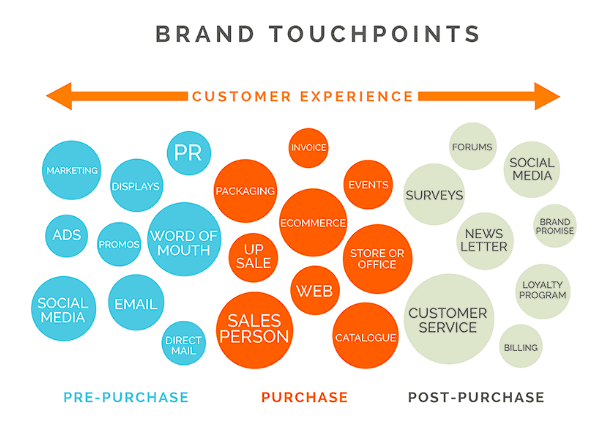In 1973, at a lecture at the University of Pennsylvania, IBM’s Chief Executive Thomas J. Watson Jr. proclaimed, “good design is good business.”
Design may be something that you brush off as an expendable expense when it comes to budgeting and allocations, but it’s just as important as other facets of a business when it comes to both the long and short term health of a company. Design has evolved into being more than just looking aesthetically pleasing, it also concerns how things work and how people interact.
According to the Design Management Institute, design-driven companies have outperformed the S&P Index by 219% over 10 years. In fact, 48% of people surveyed by Tyton Media said that the website design of a business was the number one factor in deciding the credibility of that business.
Branding
Design is your business’ entity presented in a visual medium. Have you ever noticed the disparity between a company that focused on design versus one that didn’t? Having a well-designed brand system for your business has a lot of benefits:
- Stands out from competitors
- Elevates trust between company and consumer
- Clearly communicates business goals at a glance
- Sets a positive first impression
- Looks sophisticated and professional
- Keeps the brand memorable
An accumulation of all these benefits results in increased revenue and online presence. Large companies have recognized the importance of design and started buying consultancies and investing in their in-house teams - take a look at Amazon, Facebook, or Uber’s design departments.
Think of the brand ecosystem they have created, where everything shares the same visual language and is easily identifiable as being made by Apple. Today, design has become a signifier for innovation. Having a defined look for your company - whether that be through consistent imagery, typography, color, layout, or even the product itself - builds brand loyalty and trust.
"The companies who perform best in terms of design outperform their industry peers by a wide margin… Their growth in terms of revenue is nearly double that of their peers, while their growth in terms of shareholder returns is 70% higher." - Ben Sheppard
User Experience
This all relates back to the idea of user (or customer) experience. A customer’s opinion about a company is affected by each touchpoint that the customer interacts with the brand. After so many negative user interactions with a brand or its product, it becomes a negative reflection of the company. All it takes is one bad experience to mess up a customer’s relationship with a company.

In other words, if something is easy and delightful to use, people will keep using it. If something is the opposite, people will stop using it, or highly dislike having to use it. For example, if something is hard to navigate or has an odd button placement, people will be less inclined to use the product and will feel frustrated.
A poorly-designed product is tethered to the company’s reputation, and that negative connotation they experience will build and build. Eventually, you’ll be out of customers. This is why investing time and resources into having great user experience design is so crucial.
The customer should be at the forefront of your mind when it comes to design and to general business. That being said, accessibility is extremely important - a wide range of different people with different wants and needs make up your consumer base. Design should strive to address all of them, as improving general accessibility problems benefits everyone’s experiences. More positive experiences make for increased sales and business.
Strong design equates to strong consumer trust. With trust being the foundation for all business interactions, people are less likely to trust a poorly-designed website, which is often people’s first interaction with a company. Not only does it look less professional, bad website design often includes busy layouts, competing imagery, and hard-to-read text - making it difficult for the user to find what the company is about.
“The quality of the user experience is one of the decisive factors for a user to choose between you and your competitor.” - Dennis Hambeukers
Visual Communication
At its essence, design is visual communication. Good design addresses how things look and function, and ultimately how they help you achieve your business and communication goals. Designers work with you to clarify how people see the business.
The brand acts as the vessel through which you communicate your business goals and mission. Its the first thing people see and the first thing people connect with the company itself. Design acts as an extension of the brand, if time and effort aren’t put in to make the design great, it’ll reflect back on the company.
“Good design is good for business. Measurable, profitable, and helpful for the customer.” - Design for Founders
Ultimately, design can make or break your company - that is, in relation to the customer’s experience and overall perception of the brand and products. A poorly-designed customer experience can, by extension, reflect poorly on the company.
There are numerous reasons as to why having good design is good for your business: cohesion, retention, professionalism. All of those qualities have one shared commonality: trust. Good, informed design builds trust. And trust is the building block on which to build all business relations. Attention to design and to the user is key in having a successful company.
